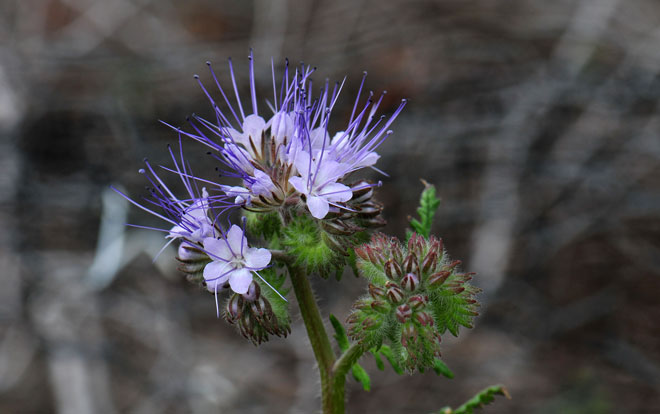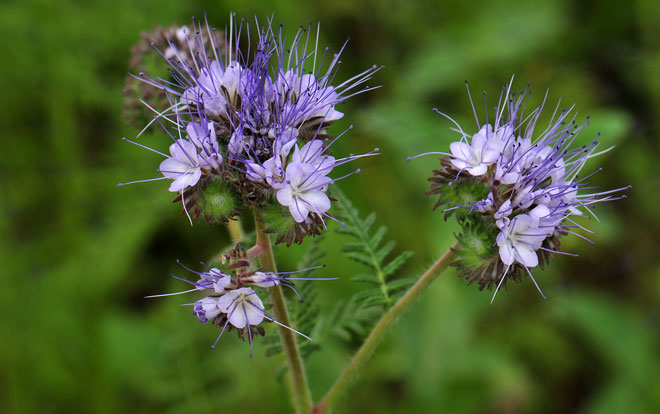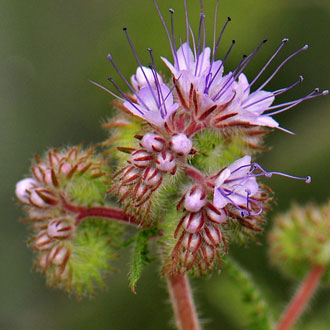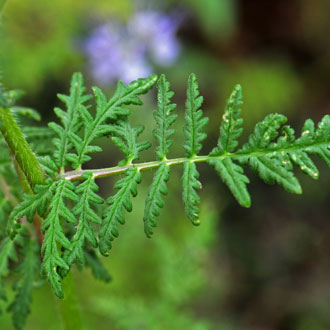Phacelia tanacetifolia, Lacy Phacelia




Scientific Name: Phacelia tanacetifolia
Common Name: Lacy Phacelia
Also Called: Lacy Scorpion-weed, Facelia, Fiddleneck
Family: Hydrophyllaceae (Boraginaceae, Hydrophylloideae), the Waterleaf Family
Synonyms: (Phacelia tanacetifolia subvar. tenuisecta)
Status: Introduced from California.
Duration: Annual
Size: Up to 3 feet or more usually much less.
Growth Form: Forb/herb; stems erect stiff-hairy (hispid)
Leaves: Green; mostly compound, leaflets lobed (see photo above), stiff-hairs.
Flower Color: Blue, lavender-blue; bell-shaped, sessile in scorpioid cyme, fruit a capsule.
Flowering Season: March to May.
Elevation: Up to 5,000 feet.
Habitat Preferences: In California sandy or gravelly slopes and open areas.
Recorded Range: An irregular distribution in the United States where Lacy Phacelia is found in; AZ, CA, KS, MA, ME, MI, NV, OR. Native to California and possibly Arizona. Also native to the eastern ⅔ of Canada; Baja California and possibly northern Mexico.
North America & US County Distribution Map for Phacelia tanacetifolia.
U.S. Weed Information: No information available.
Invasive/Noxious Weed Information: No information available.
Wetland Indicator: No information available.
Threatened/Endangered Information: No information available.
In the Southwestern United States: Arizona has 49 species of genus, California has 96 species, Nevada has 54 species, New Mexico has 23 species, Texas has 13 species, Utah has 42 species. All data is approximate and subject to taxonomic changes.
Special Value to Native Bees; Species of the genus Phacelia are known to, or thought to attract large numbers of native bees including Yellow Faced Bees, Miner Bees and Mason Bees. This information was provided by the Pollinator Program at The Xerces Society for Invertebrate Conservation.
Comments: In Southwest Desert Flora also see; Desert Bluebells, Phacelia campanularia, Cleftleaf Wildheliotrope, Phacelia crenulata, Distant Phacelia, Phacelia distans, Fremont's Phacelia, Phacelia fremontii, Varileaf-Phacelia, Phacelia heterophylla and Kaweah River Scorpion-weed, Phacelia magellanica.

